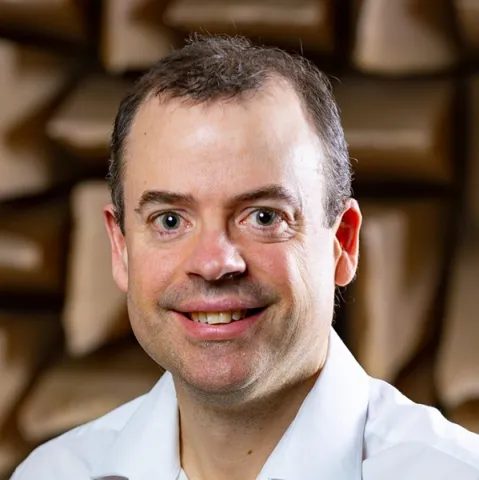About the project
This project will investigate novel signal processing and measurement techniques to extract key acoustic source information from test models in reverberant wind tunnel spaces.
Automotive and aerospace organisations are increasingly looking to include acoustic measurements within their aerodynamic test programmes to reduce cost. Acoustically diffuse spaces, however, are extremely challenging environments to reveal acoustic source amplitude and directivity data required to derisk future noisy vehicle designs.
The project is supported by Rolls-Royce plc, and you will be supervised within the Rolls-Royce University Technology Centre (UTC) in Propulsion Systems Noise. You will join a strong team of highly motivated researchers at the Institute of Sound and Vibration Research (ISVR), which is recognised as one of the world’s leading centres for the investigation of sound and vibration phenomena. Training in aeroacoustic measurement techniques (in-flow microphones and constant temperature anemometry) will be provided.
The project aim is to develop both an in-flow microphone array and the requisite signal processing techniques to record and isolate direct sound field information within a surface boundary layer. Important questions arise when attempting to minimise:
- the aeroacoustic impact of the array on the test model itself
- the aerodynamic boundary layer noise incident on the surface microphones
- the effect of wind tunnel reverberation on the measured sound field
Initially, you will design and perform a simple experiment in a state-of-the-art anechoic open jet wind tunnel, in the ISVR’s Doak Laboratory, to establish the ‘free-field’ limitations of existing in-flow microphones at low-subsonic Mach numbers (M ≤ 0.3). An iterative design process will then follow to minimise the aerodynamic noise component of the measured sound field and to maximise the signal-to-noise ratio of the direct acoustic component. This process will involve a combination of physical array design modifications and the implementation and development of various signal-processing algorithms. Ultimately, the knowledge accrued throughout the project will inform both the array design and data processing requirements for a Rolls-Royce closed wind tunnel aeroengine test.
The School of Engineering is committed to promoting equality, diversity inclusivity as demonstrated by our Athena SWAN award. We welcome all applicants regardless of their gender, ethnicity, disability, sexual orientation or age, and will give full consideration to applicants seeking flexible working patterns and those who have taken a career break. The University has a generous maternity policy, onsite childcare facilities, and offers a range of benefits to help ensure employees’ well-being and work-life balance. The University of Southampton is committed to sustainability and has been awarded the Platinum EcoAward.
